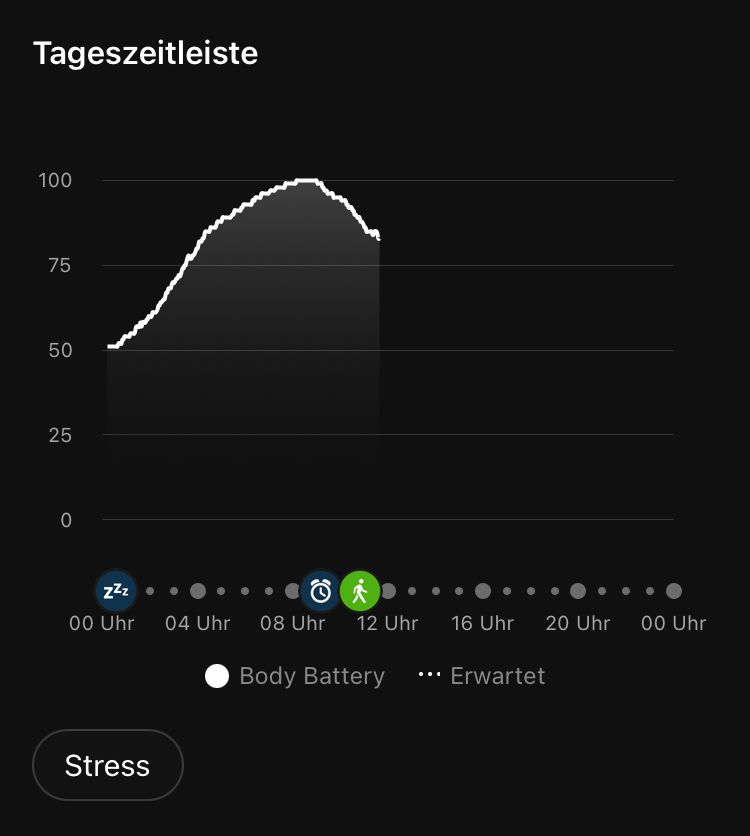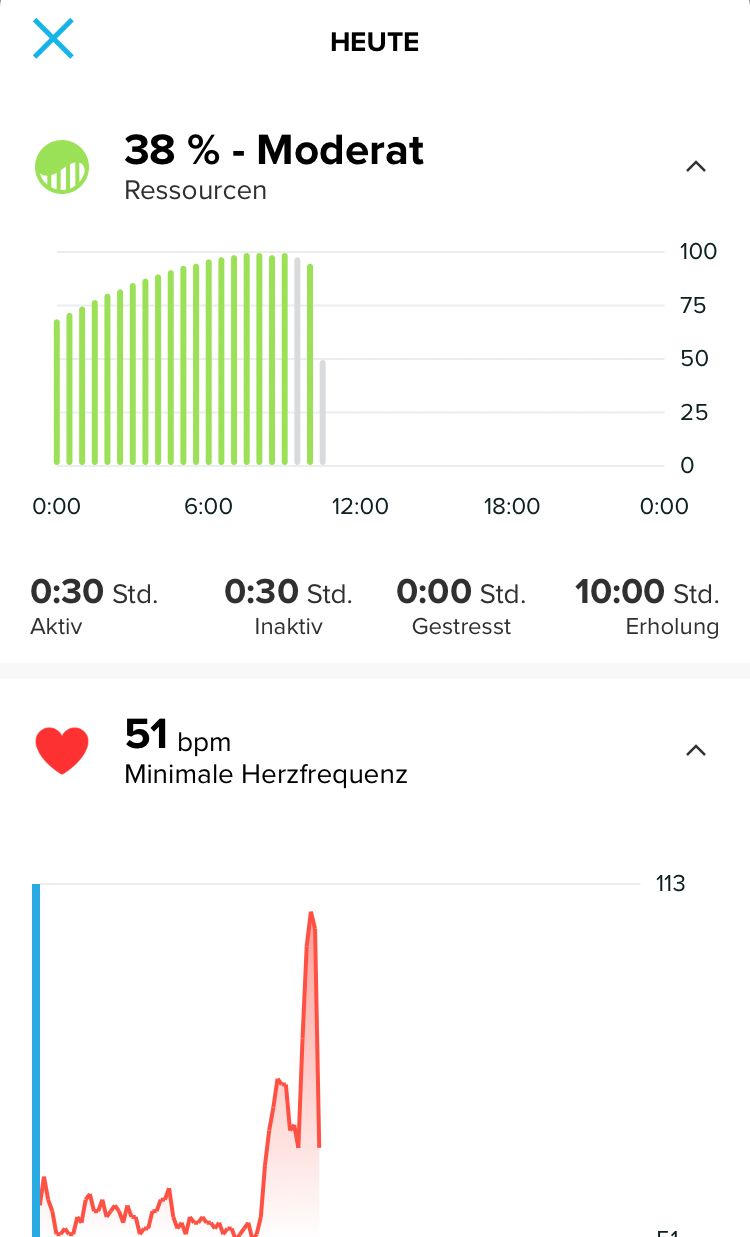Suunto 9 Non-Baro health resources feature
-
Hi folks,
This is my first post on this forum and I am hoping to getting some clarifications. I have been using Suunto products since the Vector days

My questions is related to the resources feature which I find quite interesting when compared to an app that I used with my Apple S6 called Trainingtoday. The concept is straightforward with TD it provides a readinesses score 1/10 based on HRV reading throughput the day. For me, the first score is the most important as I get my running done early in the morning.
I found the scoring to be incredibly accurate. 10 was push hard and whilst I had a chest infection it was a bold read font * take a rest*
My understanding is that the HR sensor in my Suunto 9 measures HRV throughout the sleep period and during daytime and this is how it translates these reading to stressed, active, inactive and recovering.
How long does it take for Suunto 9 HR to establish a HRV baseline and does one need to input the RH during sleep or RH during the day Ie: whilst watching tv?
It appears that my MN HR throughout my sleep is 53bpm.
Going back to Trainingtoday, the scoring features was a great way to gauge my readiness, I wonder if Suunto scoring throughout the day is in a way similar to TD…. ?
I would love to see the scoring feature implemented in Suunto as it’s an easier way to monitor how my resources are depleting.
Cheers
Sl -
@optics-field-test said in Suunto 9 Non-Baro health resources feature:
How long does it take for Suunto 9 HR to establish a HRV baseline and does one need to input the RH during sleep or RH during the day Ie: whilst watching tv?
It appears that my MN HR throughout my sleep is 53bpm.
Hi, I can clearly answer only one of your questions, the one, above. Accoring to manual:
https://www.suunto.com/en-gb/Support/Product-support/suunto_9/suunto_9/features/stress-and-recovery/
Use the lowest heart rate reading measured during your sleep as your Rest HR.
-
@zadow Top man! Thanks for tip highly appreciated!
Cheers
-
@zadow @Optics-field-Test And I believe that this is quite wrong. I remember many discussions about this (either here or on facebook). We came to the conclusion that the Resting HR should be determined when you’re awake but resting, e.g. when you’re watching the TV or reading a book.
My lowest HR during sleep is ~ 38. When I use that as my Resting HR, my Resources are always close to 0 %.
-
@inkognito I remember the same. Am just checking with Suunto if this manual actually is correct.
-
@egika thanks guys for checking this one out. I guess it’s important to have right number in so body resources is calculated correctly.
-
@inkognito Thanks for pointing this one out.
Hopefully Suunto can confirm this once for all for everyone.
Cheers
-
@inkognito Honestly, I rember that discussion too. I was part of it. Well, I tried and tested many “versions” of RH - lowest RH during sleep, morning RH right after wake up, and RH during the day. All of them gave me more or less same results with body resources measurement. I guess that HRV is the key here. RH is used for HR zone calculation (and for that, morning RH should be used).
-
@zadow the wrist HR sensor of S9 does RR measurements? I did not know that
-
@egika well, this is big unknown to me, as I did not see any clear answer for this. I asked many times, but as an answer I always got a documentation from FirstBeat. Algorithm of FirstBeat is used in Suunto as well. However, FirstBeat alg is based on HRV. Therefore, I assume, that Suunto S9b HR sensor is capable of measuring RR (IBI - Inter Beat Interval). On the other side, during activity, HRV (aka RR, aka IBI) is not measured…so, this is a grey area, discussed so many times here, that IMHO, if we continue here, the discussion will be closed by admin as duplicate…
-
@zadow afaik the HRV information used with the First Beat algos is taken from the chest belt, not from the wrist. But I am not sure.
-
@egika Well, you are absolutely right, of course. The question is, how this algo can be used in watch with OHR, then?
Well, if someone could get a clear answer from Suunto on that, I would highly appreciate that. I am uncertain here as well. -
@zadow contacted Suunto and I was given the link below.
It’s different from the one related to body resources which seem more appropriate. If Suunto recommend tjr lowest HR during sleep in their article surely that should be correct? https://www.suunto.com/en-gb/Support/Product-support/suunto_9/suunto_9/features/stress-and-recovery/
-
@optics-field-test What we really need is an orthostatic test similar to the Ambit3 test…
However, this from several users and some field testers. Setting the HR to the lowest at sleep will provide very low Resources. The best number to use is resting HR when you are sitting and rested, not the lowest HR during sleep. -
@brad_olwin I have to agree with you lowest RHR when watching tv or as soon as you wake up.
I had a Suunto advisor yesterday advising me to do exactly that.
Now, the question would be would one need to input the average RHR throughout the day of the first resting Hr upon waking up?
With best wishes,
Sl -
@optics-field-test don’t overthink it. Sit still for 5mins, breathe slowly, do nothing and get your value. If your waking up is 2 bpm less, I would not care much. This whole thing is no exact science anyway.
-
@egika You are right. Thanks for your help

-
@optics-field-test I actually set my Resting HR about 8 beats above my average sleep HR and get good results concerning „recharching“ during rest. But I suffer from the bug, that resources drop way too much during light activities like walking with the dog as seen here compared to a Garmin with the „same“ (just an assumption) firstbeat algorithms, worn during the night and alongside the Suunto during a morning walk:


Hope Suunto can fix this someday…
-
@chrisa I see exactly what you mean!
Mine is the same it tracks nicely my status throughout the day but in the morning I do very little like driving kids to school and it drops more than 30%.
I can only think of this big drop as it’s also calculating how stressed I am and that plays a major factor in the % lost. In the evening when I am relaxed I start gaining resources correctly until I get to bed. I can easily get to bed with 50% recharged and in the morning I would have a 92% resources base on a good night sleep. Let’s see if this can be tweaked by Suunto to fix unnecessary big drops for very little activity like walking the dog or cruising around the house.
Which Garmin do you use please?
Thanks
-
@optics-field-test I thought that it might be stress too, but for me that was a completely stress free day, no work, relaxed family life… Mostly happens in the morning, so might be raised HRV after low HRV.during sleep, but can’t really find any solution. Also had days when it did not drop and stayed normal.
Data is from my son‘s Forerunner 245 (he is an avid Applewatch user since a year or so not using it anymore)